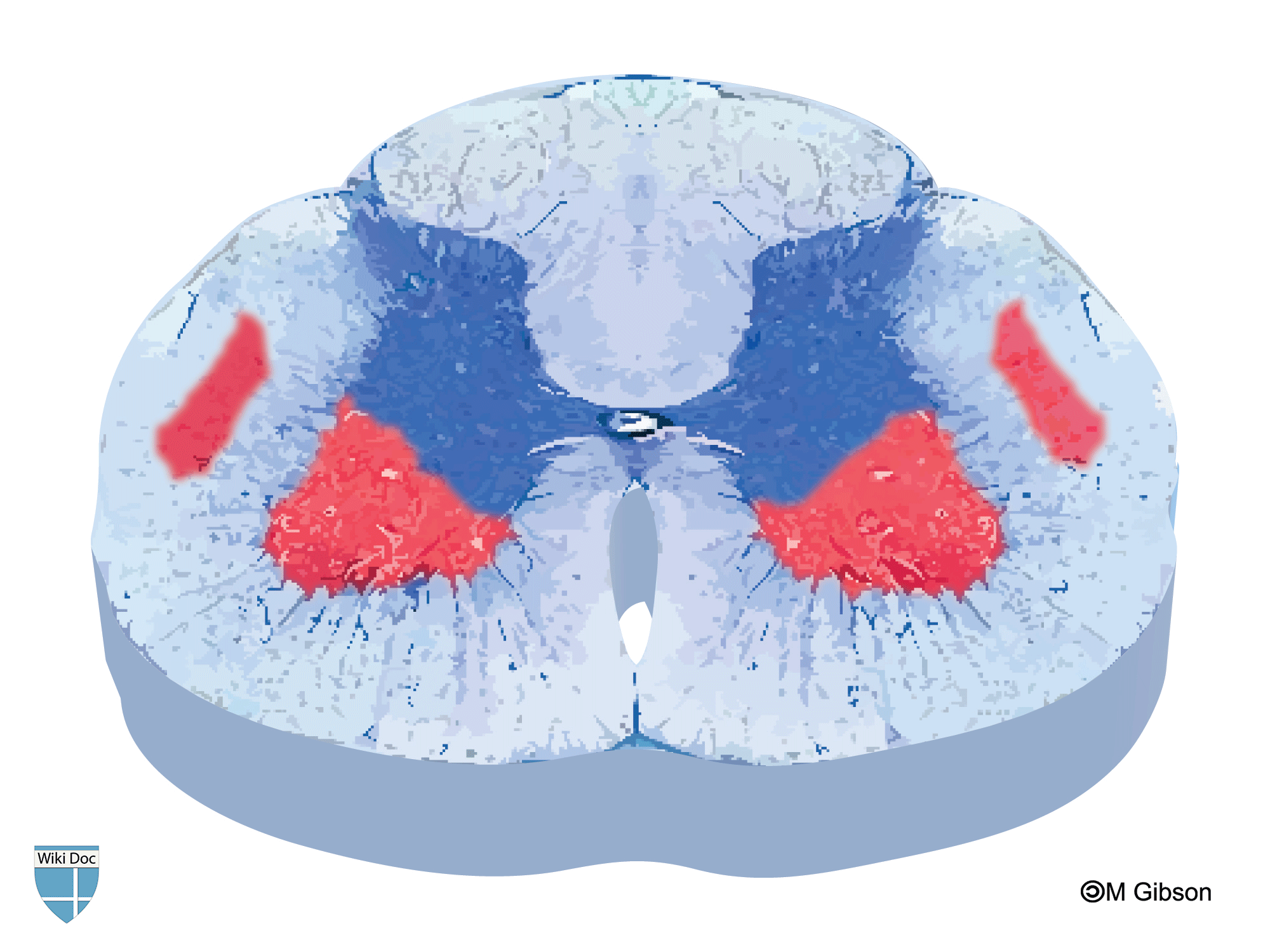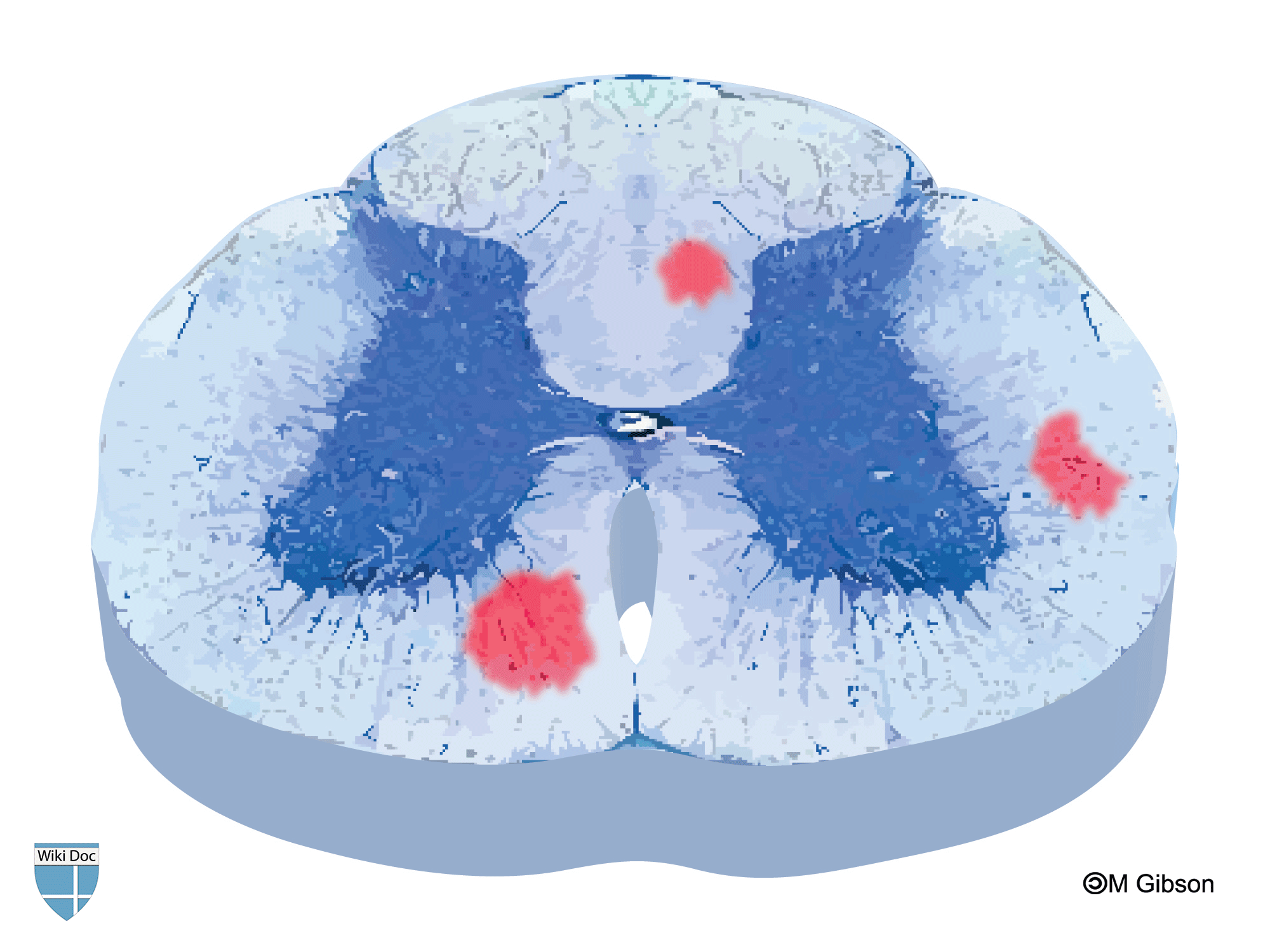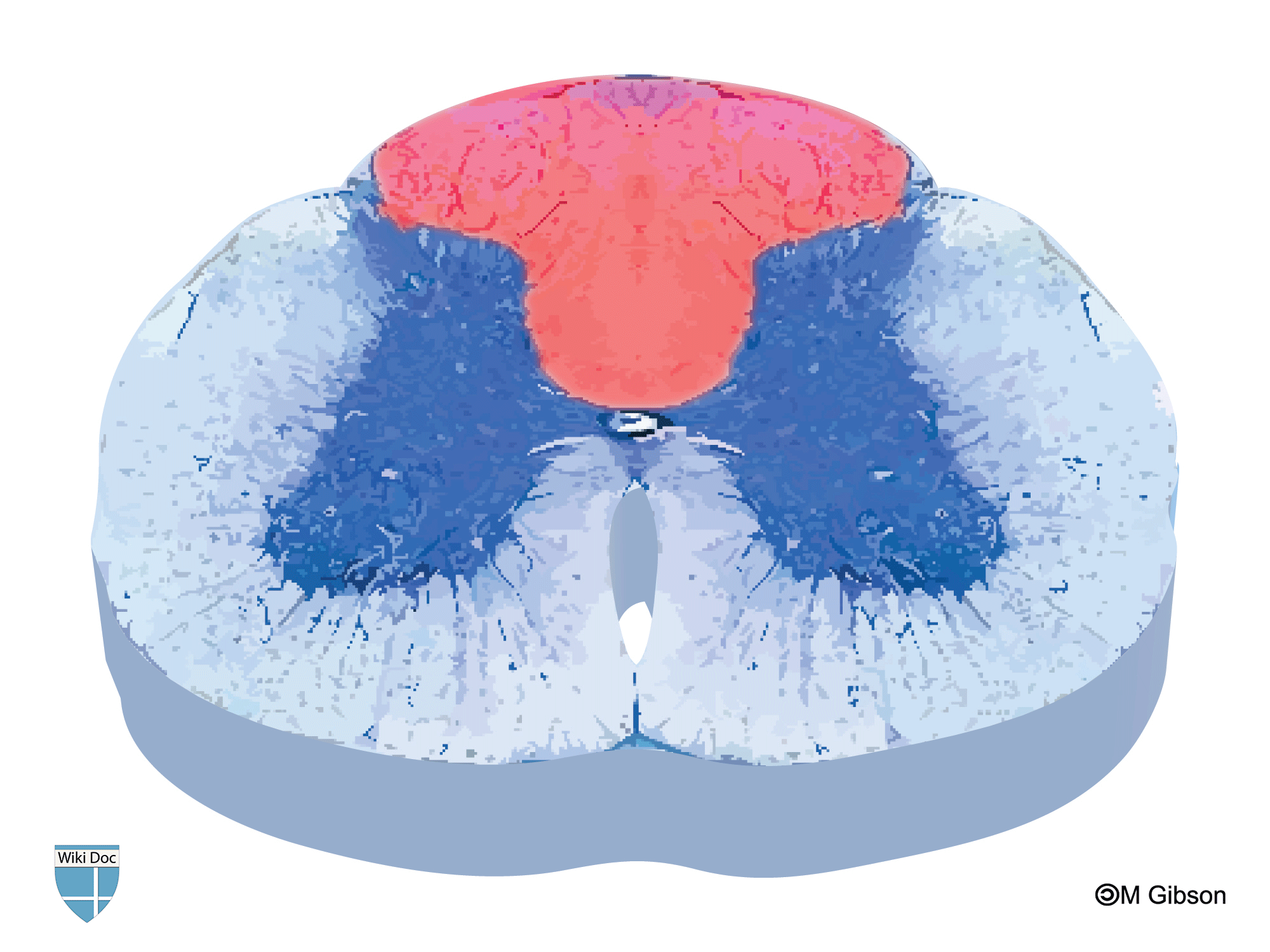WBR0575
| Author | [[PageAuthor::Rim Halaby, M.D. [1]]] |
|---|---|
| Exam Type | ExamType::USMLE Step 1 |
| Main Category | MainCategory::Pathophysiology |
| Sub Category | SubCategory::Neurology |
| Prompt | [[Prompt::A 36 year old woman presents to the neurology clinic complaining of a 1 week history of bilateral upper extremity weakness. Upon further questioning the patient reports that for the past 3 months, she has had multiple burns of both hands because she cannot seem to distinguish hot from cold objects. She also doesn't feel any pain in her hands which is why her burns are usually significant before she notices them. Physical exam reveals diminished upper extremity reflex bilaterally and lower extremity hyperreflexia. Which of the following images best depicts the location of the patient's lesion?]] |
| Answer A | [[AnswerA:: ]] ]]
|
| Answer A Explanation | [[AnswerAExp::This image typically depicts spinal cord lesions of ALS that involve both descending corticospinal tracts, and the anterior horns. The involvement of both these structures is what leads to the combination of UMN and LMN symptoms seen in ALS.]] |
| Answer B | [[AnswerB:: ]] ]]
|
| Answer B Explanation | [[AnswerBExp::This image depicts isolated anterior horn injury usually seen in patients with poliomyelitis or Werdnig-Hoffman Syndrome (floppy baby syndrome). Both of these diseases only cause LMN signs due to the lack of involvement of descending motor tracts.]] |
| Answer C | [[AnswerC:: ]] ]]
|
| Answer C Explanation | AnswerCExp::This image depicts multiple, non-patterned white matter lesions usually seen in patients with multiple sclerosis. |
| Answer D | [[AnswerD:: ]] ]]
|
| Answer D Explanation | AnswerDExp::This image is depicts an expanding central canal compressing adjacent tracts typically seen in syringomyelia. The anterior white commissure is the closest structure which leads to compression of the decussating spinothalamic tracts first. |
| Answer E | [[AnswerE:: ]] ]]
|
| Answer E Explanation | [[AnswerEExp::Dorsal column lesions are not seen with syringomyelia. They are classical of tabes dorsalis in tertiary syphilis when isolated. Dorsal column lesions are also part of the subacute combined degeneration syndrome seen in vitamin B12 and vitamin E deficiency.]] |
| Right Answer | RightAnswer::D |
| Explanation | [[Explanation::Syringomyelia is a disease of the spinal cord related to the development of a fluid-filled cavity or syrinx within the central canal. As the central cavity expands, specific spinal tracts are affected. The syrinx first interrupts the spinothalamic tract fibers that decussate at the anterior white commissure in close proximity to the central canal. Stretching of the spinothalamic fibers that relay pain and temperature results in the loss of these sensations. Light touch, position sense and vibration senses are usually preserved. As the syrinx expands further it locally interrupts neurons of the anterior horn leading to LMN symptoms of the upper extremities. It also locally interrupts descending motor fibers leading to UMN symptoms of the lower extremities. Patients present with a history of loss of temperature and pain sensation in the hands (most common location of syrinx formation is in the cervical spine), with a history of multiple burns. As the syrinx becomes more significant, symptoms of weakness arise. Syringomyelia can be associated with Arnold–Chiari malformation.
Educational Objective: Syringomyelia is a syndrome involving a fluid filled cavity of the central canal that interrupts the spinothalamic tracts leading to bilateral loss of temperature and pain sensation usually in the upper extremities. References:
Williams B. Progress in syringomyelia. Neurol Res. Sep 1986;8(3):130-45.
Kim J, Kim CH, Jahng TA, Chung CK. Clinical course of incidental syringomyelia without predisposing pathologies. J Clin Neurosci. Feb 29 2012 |
| Approved | Approved::No |
| Keyword | WBRKeyword::Syringomyelia, WBRKeyword::Spinal cord, WBRKeyword::Spinothalamic tracts |
| Linked Question | Linked:: |
| Order in Linked Questions | LinkedOrder:: |